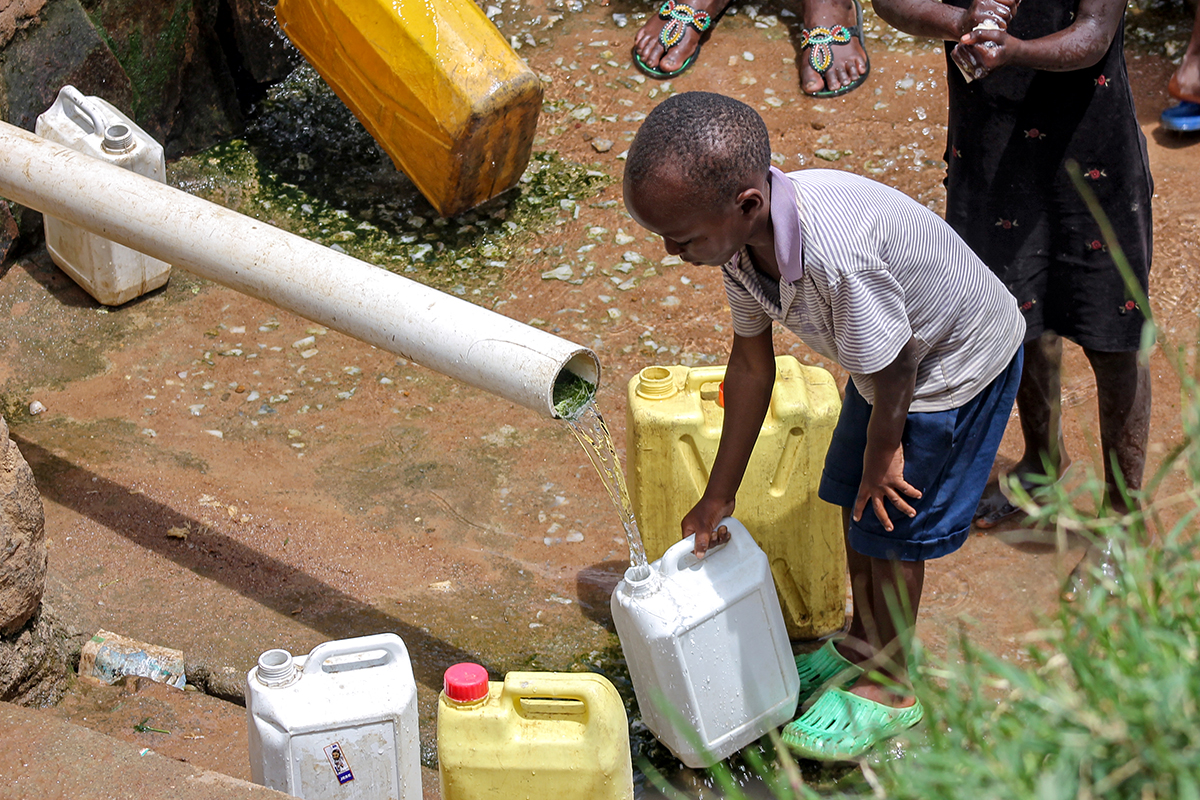
Gloriose Isugi, GPJ Rwanda
Only a tiny fraction of residents in Kigali, Rwanda’s cosmopolitan capital, have taps connected to the water system. Even those who do say the taps are increasingly running dry, forcing them to seek out fresh water from local springs, which are often long distances from their homes.
KIGALI, RWANDA — It’s late afternoon, and a large group of people waits in line under the scorching sun near a natural spring located at the foot of the Kibagabaga hill in Kigali, the capital of Rwanda.
As the hours drag on, some people waiting in line with their water containers decide to fetch dirty water from a nearby swamp instead.
Being forced to wait in line for spring water is frustrating, but having to collect dirty water is even worse – especially for the residents in this neighborhood, whose homes are among the 36 percent of homes in Kigali where taps deliver clean water.
With increasing frequency, the taps in their homes are running dry.
Intermittent service has been common in the past, but lately the taps only work for three days out of seven.



Ezechias Shumbusho was in line at the spring recently. He says the growing water shortage is affecting families and businesses.
“There’s need for a sustainable solution,” he says, adding that the cost of water is going up thanks to the shortage, which is why so many people are waiting at the natural spring.
Water carriers typically sell one jerry can of water for 100 Rwandan francs (12 cents), but in times of acute water shortage, the price triples to 300 Rwandan francs (35 cents).
Rwanda, a Central African country, has recorded impressive infrastructure achievements in recent years, but access to clean and potable water remains an ongoing challenge. Most Rwandans do not have access to running water, which is supplied to some neighborhoods by the Water and Sanitation Corporation (WASAC). Walking long distances to fetch water from natural springs remains common here, and health consequences from waterborne diseases are a continuing problem.
According to WASAC, there are 172,747 homes with taps connected to the WASAC water-supply network. The majority of these are in the capital, where there are 103,318 taps. As of 2015, the population of the capital was more than 1.3 million.



The Kimironko administrative sector is one neighborhood where most homes have taps, with water supplied by WASAC. Dominique Murekezi, WASAC manager, acknowledges the recent shortages and says they are caused by limited water supply in the area around Kimironko.
But it’s a problem that has a solution, he says.
A new water-treatment plant called Nzove III is nearing the final stages of construction. The plant will increase water access by 40,000 cubic meters (about 10.6 million gallons) per day, Murekezi says, adding that it will be sufficient to renew supplies to Kimironko and other areas affected by ongoing shortages.
Still, water shortages will continue to impact a majority of Rwandans for the foreseeable future.
“It’s lamentable that I have to spend hours and hours here waiting for unpredictable water,” says Gilbert Urimubenshi, a Kigali resident. “I have to come here so many times, since one jerry can is not enough for my daily household water needs.”
Ndayaho Sylvestre, GPJ, translated the article from Kinyarwanda.







